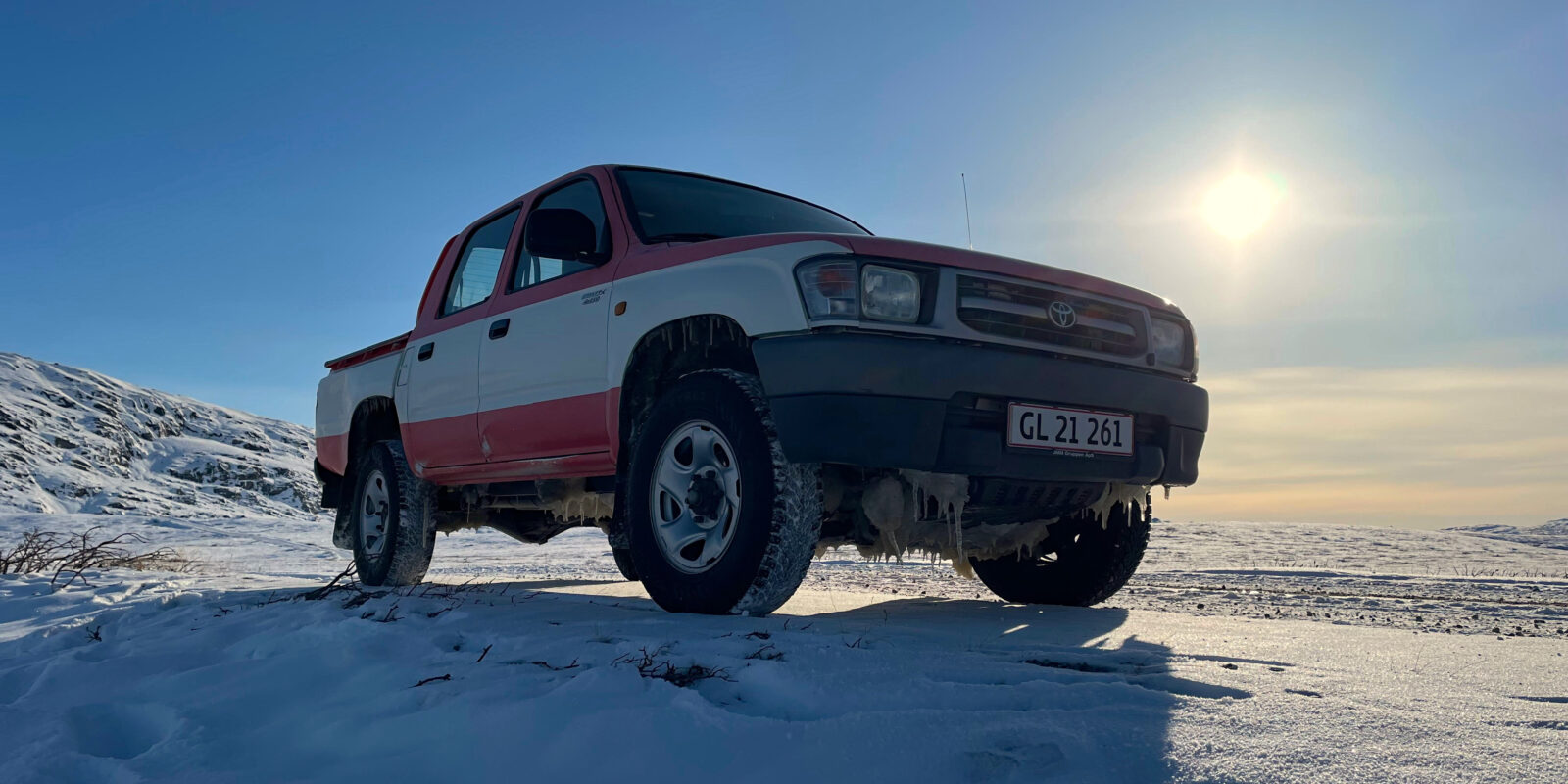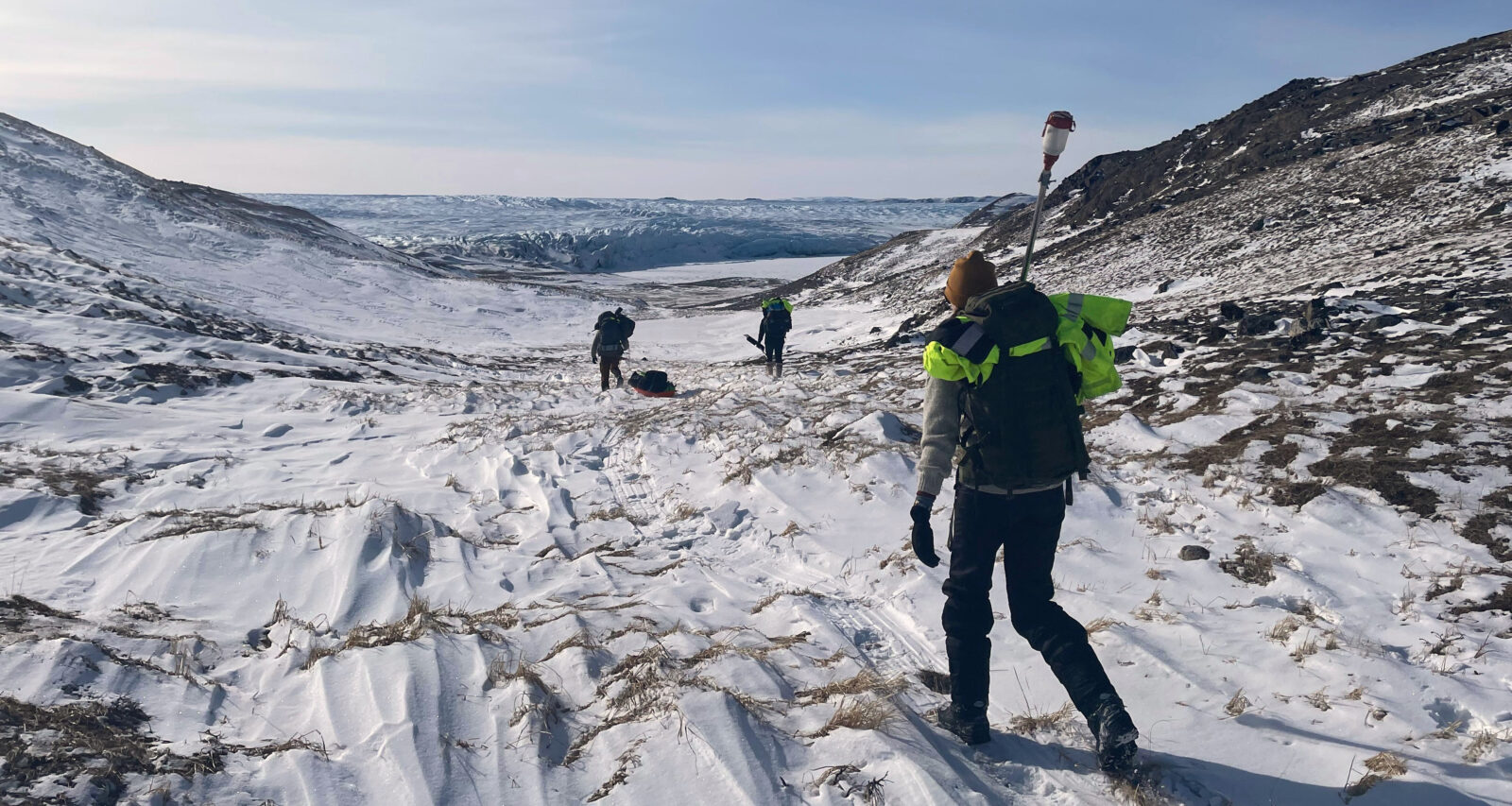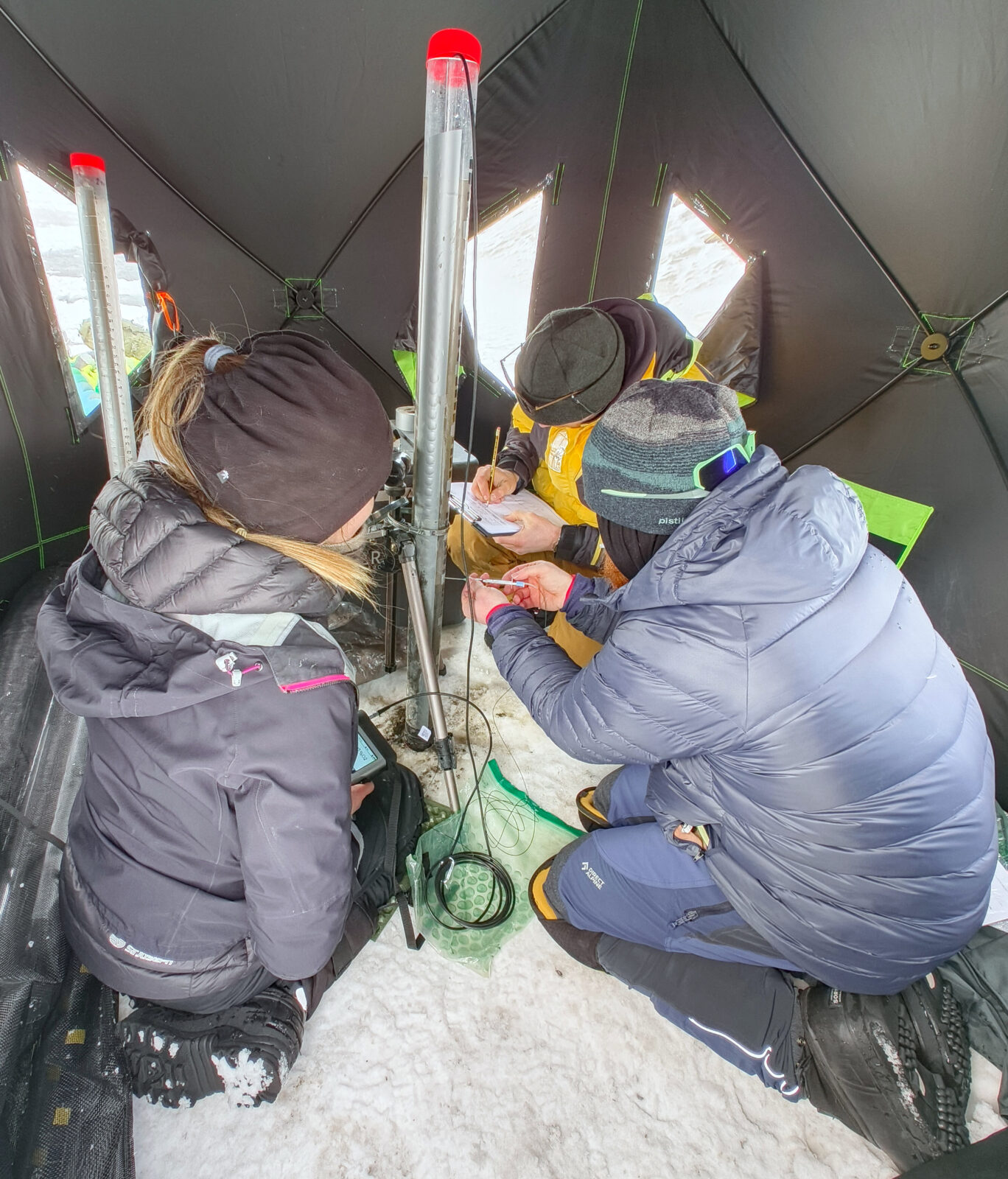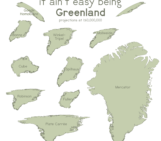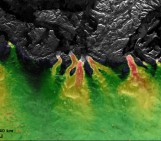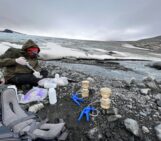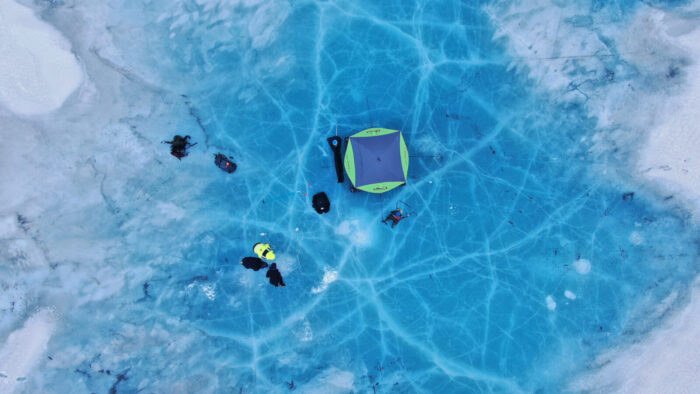
Would you like to follow the endeavours of a small team working in the ice-marginal terrain in South-West Greenland? They set out to investigate proglacial lakes using sediment coring, water sampling and gas collections (figure 1), aiming to better understand methane dynamics, proglacial terrain development and the environmental drivers behind methane production in glacially influenced lake systems. Here, you will read how the team is confronted with the resistance of frozen landscapes and strives to uncover the elusive truths hidden in the depths of the lake.
The truck is loaded, and the team is ready to head out for a new lake. Starting from the settlement of Kangerlussuaq, we are heading towards the ice sheet in the proglacial terrain of South-West Greenland. While going through the packing list (Tent? – Check, Ice drill? – Check, Corer? – Check, Sampling kits? – Check), the truck stutters after turning the key in the ignition. No wonder, given that it is covered in ice from prior days, heavily loaded with our equipment and the faded color of its paint shows the weathering of many field seasons before (figure 2).
After another try, the engine starts with a slight delay, and we are off. As we continue deeper inland over the ice-covered dirt road, the driver manoeuvres through the gullies, cracks, and ridges. If you weren’t fully awake before, you certainly are now. The defrosting windshield of the car slowly allows us to clearly see the landscape with endless moraines, wide floodplains, and the occasional visitor, like an Arctic hare or a caribou, catches our attention.
The timing of this plan is no coincidence. Today’s weather is exceptionally forgiving with a blinding sun and a gentle breeze. Besides, this lake marks number 8 in our final set of 12, and the team is growing increasingly efficient with each one. One thing that stands out during this winter campaign: you never know how things will unfold. Or as the PI would say: ‘Don’t sell the bearskin, yet’, tempering any misleading optimism. I am thinking of the unexpected events in the field from the previous days and what we can possibly expect next: Will we lose our last essential spare piece of the coring device? Will the car get stuck in the snowbanks again? Or will we have to abort our sampling by an unforeseen storm, yet another time?
Now it is quiet in the car; everyone feels the weight of the sampling days behind us and the excitement of anticipation, like the moment just before stepping onto a stage.
The team and the task
The equipment goes from the trunk onto our backs and the pulk, which is a sled used for transporting our gear. The journey continues on foot (figure 3). In the front we have Guillaume and Laura, making the first combined effort in pulling the pulk. Guillaume Lamarche-Gagnon specializes as an environmental microbiologist and glacial biogeochemist, knows the area well and has an incredible feel for leading the campaign, where high team morale is key to success. Next to him, there is Laura Brosius, with expertise in methane emissions from pan-Arctic lakes during deglaciation that few in the world can match. While crossing snow patches, finding stability with the weight of the backpacks isn’t always easy, but step by step we are getting closer to our lake. Now, Marie and Arthur take turns with the pulk. Marie Bulínová, who is conducting her PhD research on methane dynamics in Arctic lakes, brings expertise in lake coring that is as grounded as the sediments she studies, making her indispensable to the team. For the final stretch, Marie and I switch places and now I am beside Arthur, pulling the sled toward the last moraine that hides our destination. Arthur Fouillé is driven to tackle questions surrounding methane production and consumption in these lake systems with a solid background in microbial ecology. He started his PhD in the second half of 2024 just like me. I am thrilled to be surrounded by other scientists with overlapping interests to study methane dynamics from newly deglaciated environments, which I will focus on in the upcoming years.
Deglaciation leads to the expansion of proglacial terrains and drives the formation of an increasing number of proglacial lakes worldwide, especially in Greenland. Methane, a potent greenhouse gas, is increasingly recognized to be emitted from these newly deglaciated environments, yet due to data scarcity these sources remain underrepresented in global methane budgets. Recent evidence indicates that some of these systems may emit more methane than previously expected, possibly in linkage with glacier influences, such as glacier meltwater connectivity. As the number of proglacial lakes continues to increase, I am motivated to understand methane dynamics in these systems. With this campaign and upcoming research, we aim to identify key drivers of methane production, to contribute to the reduction of uncertainties in global methane budgets, and to improve the understanding of how these proglacial environments develop with continuing deglaciation.Clink, Crack, Collapse
Back in the field, a sound of astonishment can be heard from the front of the group on top of the final moraine. This awakens curiosity in others revealed by an increased pace towards the summit. A massive snow field stretches between us and the terminus of the ice sheet. The flat surface stands out sharply against the rugged, rocky terrain that surrounds it (figure 4). Beneath this blanket of snow lies another cover of one-meter-thick ice, under which the lake quietly rests. Our pursuit into the depths of the lake will reveal whether this system is lying dormant under its blanket or is wide awake and humming with activity.
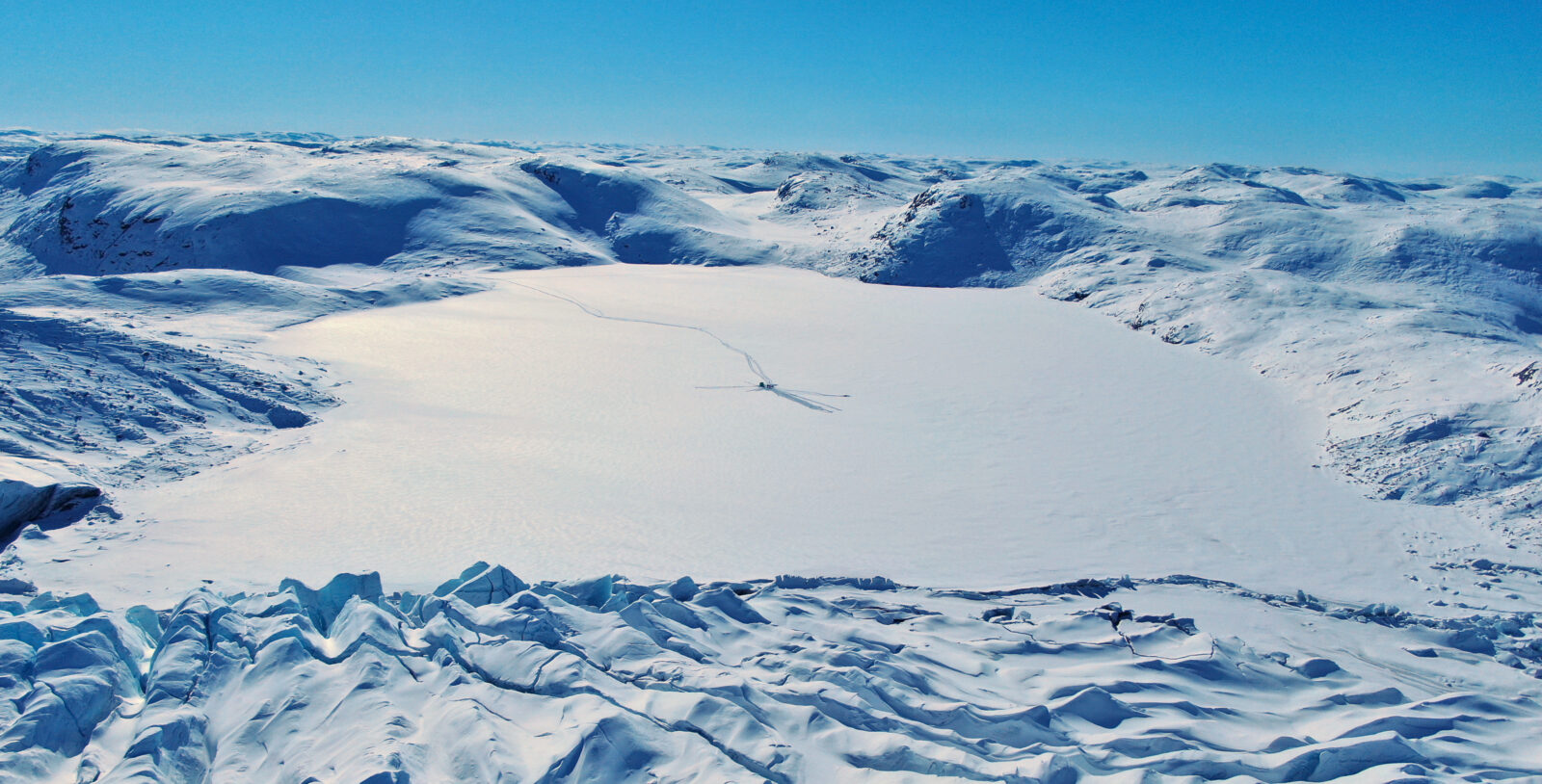
Figure 4: Ice-marginal lake covered by snow – April 2025, 67° 9′ 28.31″ N, 50° 8′ 52.03″ W. [Credit: Joost van Genuchten]
CLINK, CLINK, CLINK.
It is difficult to picture, standing on top of the lake, that vast amounts of turbulent glacial meltwater flow into the lake in summer, flushing sediments, water and (microbial) life out from underneath the icesheet.
CLINK, CLINK, CLINK.
I am trying to imagine that this now static and colossal wall of the ice sheet in front of us has not always been where it is resting today (figure 5). Maybe we are standing where it once stood before?
CLINK, clink, …
Silence. The hammering stops. The snow muffles almost all the sound around us, concentrating that what you can hear. Surging sounds of rumbling fill the sky. Arthur and I share no words, only a look of mutual stunned perplexity. The sound is back; however, this time is accompanied by cracking ice. An enormous slab of the ice wall crashes down, collapsing onto the lake with a thunder-like uproar. A reminder of how dynamic the ice sheet and its downstream systems really are.
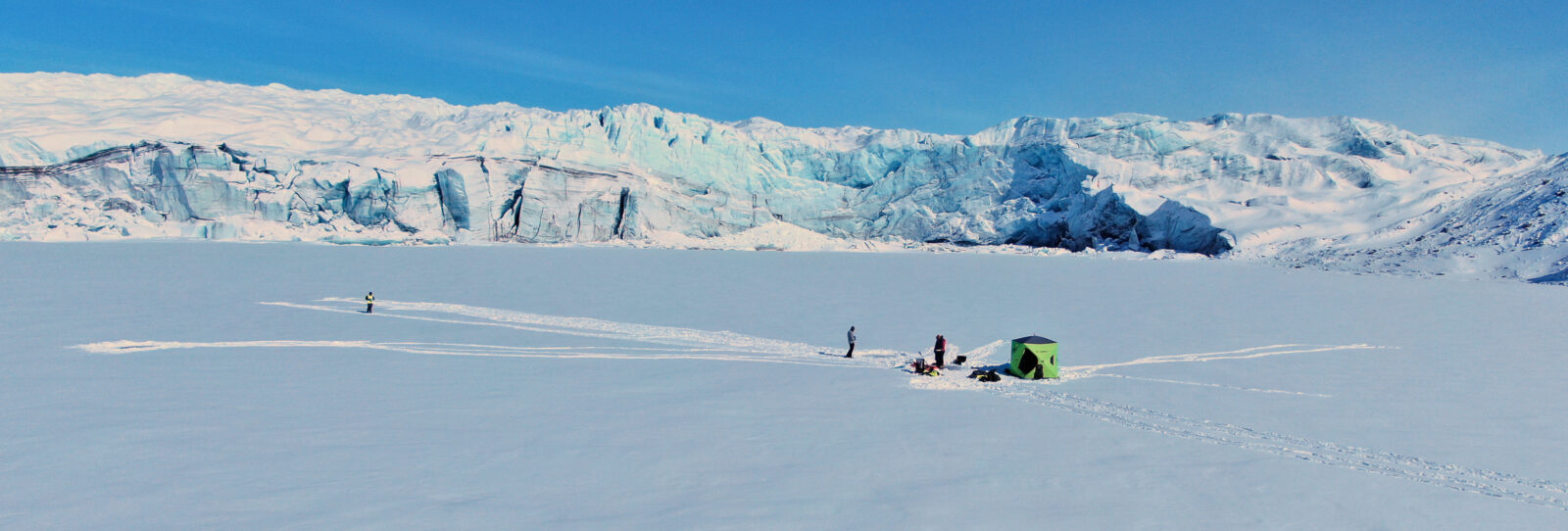
Figure 5: Study location on ice-marginal lake connected to Isunnguata Sermia – April 2025, 67° 9′ 28.31″ N, 50° 8′ 52.03″ W. [Credit: Joost van Genuchten]
Chasing bubbles
Entrapped bubbles can be seen in the lake ice. In the shallower lakes from the days before, bubbles sometimes emerged through the borehole in the lake ice, while we disturbed the lakebed. But this is not the case for this deep lake today. We must wait until we surface the core and are able to study it further in the lab, but our catch doesn’t give in easily. It takes three pairs of lifting hands for the lake to finally let go as if reluctantly releasing its hold. The wet lines freeze up while they are reeled out from the water, making it appear as a long branch that is snapped in numerous locations. Directly following the last section of the line, the core emerges and is handled with utmost care. Short, terse instructions can be heard at this stage: ‘up, up, up’, ‘stop’, ‘cap’, ‘knife’, ‘sealed’ and finally followed by: ‘We got it!’. That’s it; the first of our four cores for today. Not forgetting the lake water and gas sampling along with the subsampling of the cores (figure 6 & 7).

Figure 6: Sampling of lake water and dissolved gases through a borehole in the lake ice. [Credit: Marie Bulínová]
Further reading
- If you would like to know more about the project check out the project description and the group’s upcoming connected project PROMETHEUS.
- You can find more icy sciences at the research unit at the Centre of Ice, Cryosphere, Carbon and Climate (iC3).
- For more info about the collaborators in this project check out the Cryosphere Ecology Group at Charles University in Prague: CryoEco.
Acknowledgements
Special thanks go out to Chris Sørensen from the Kangerlussuaq International Science Support Center (KISS) for the logistical support. Also, we are grateful to Jasmine Saros for providing the team with access to the mechanical ice drill. Finally, sincere appreciation goes out to the support of the Drone Technology Group at the Institute of Technology and Safety, UiT.
Edited by Leah Sophie Muhle and Lina Madaj

